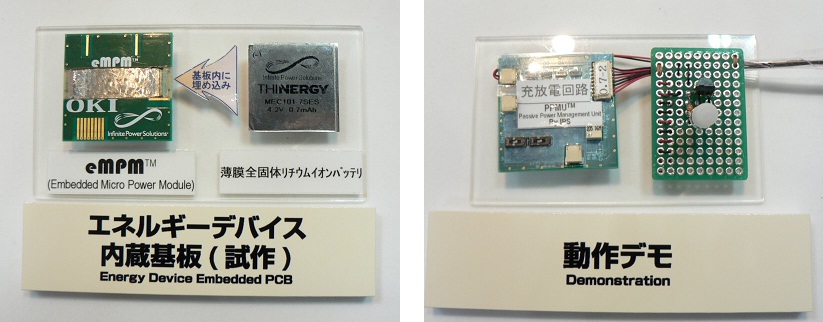A circuit board with an embedded Lithium-ion battery

The bulky batteries that power mobile devices could one day be extinct. Oki Printed Circuits has showcased technology that embeds a 170?m-thick thin-film all-solid-state lithium-ion (Li-ion) rechargeable battery into a 0.8-mm-thick printed circuit board (PCB).
The prototype was on display at the JPCA Show 2010 in Tokyo last week, and the Japanese company plans to commercialize the product sometime next year.
According to PhsyOrg, up until now, there have been only a few circuit boards that have come with integrated energy devices. For instance, some mobile phones have circuit boards with embedded double layer capacitors to store energy, a design that's advantageous over traditional decoupling capacitors. However, these capacitors still tend to have problems with high leak currents that increase the number of charges and drain the battery faster than normal. These issues are minimized by embedding the entire battery into a circuit board.
The thin-film embedded battery has an output voltage of 4.2V and a 0.7mAh (milliampere-hour) capacity, enough power to turn an LED lamp off and on (Above right-side image illustrates). And If the battery’s power can be scaled up in the future, it might also be used to power other electronic devices.
The Green Optimistic sees a future application of embedded batteries for vehicles:
Electric cars could also benefit from an embedded battery that is spread all over the vehicle in independent modules that could power various parts of the car. When they break, the embedded batteries would also be changed easily and cheaper than if a total replacement of a unique and bigger battery would be needed.
If these next-gen batteries can be eventually recharged with renewable energy sources and produced with low-cost materials that are both non-hazardous and resist degradation, it could be a breakthrough.
